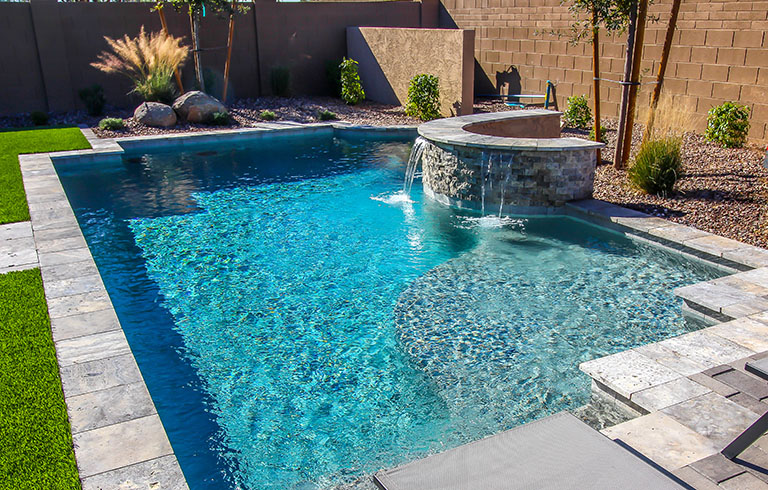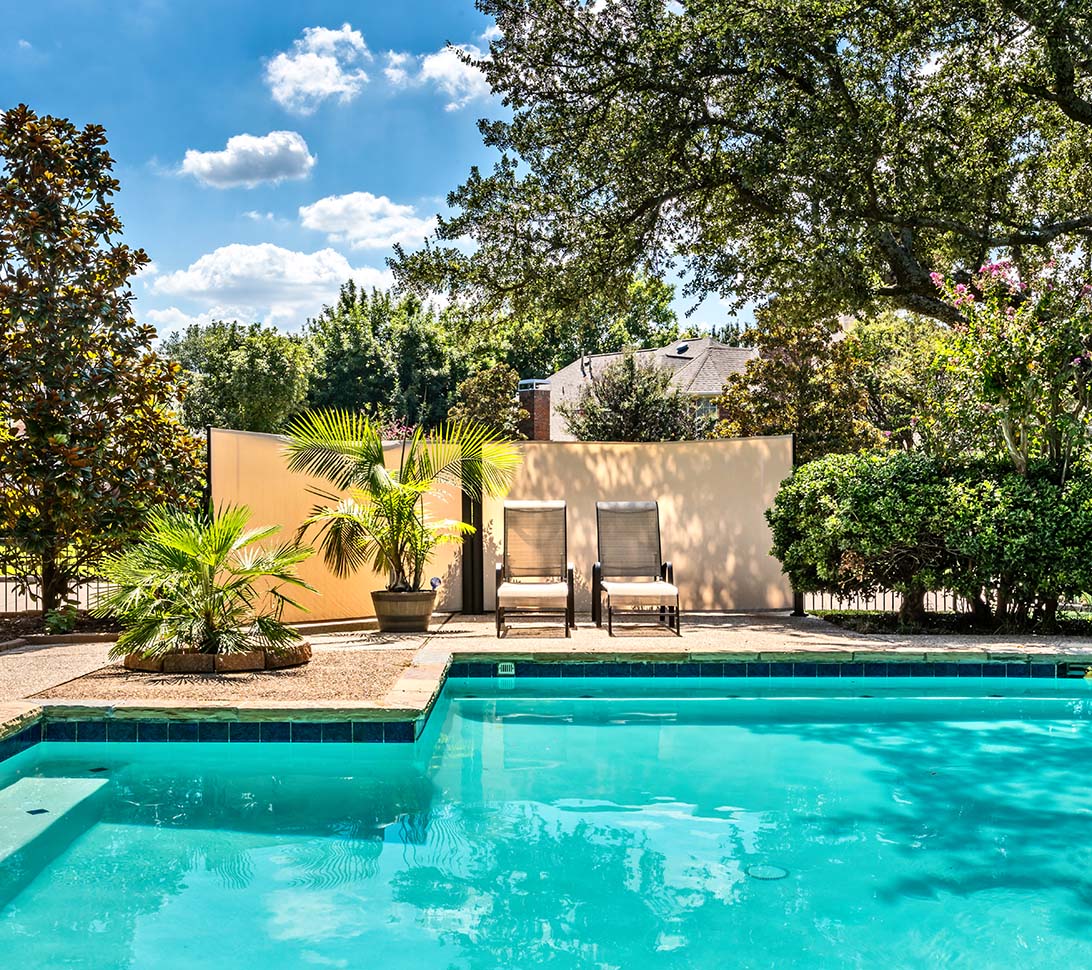How to Finance a Pool


The prospect of adding a pool to your home is an exciting one. You’re likely already dreaming of everything you’ll be able to do with it—from summer barbecues to teaching the kids to swim to elegant evening soirées with candles floating on the water. But no matter how excited you are about your future with a pool, you’re likely also concerned about the cost and wondering how to get a pool loan.
In the United States, in-ground outdoor residential swimming pools cost an average of $22,000. The price may vary depending on the size, shape, materials and labor of your particular project, but you can count on spending a significant chunk of change to cover this expense.
Fortunately, financing is an option that makes it highly affordable to construct a pool in your backyard. Here are a few tips on how to finance a swimming pool without draining your savings account.

How do you finance an in-ground pool with home equity?
Home equity loan or line of credit
There are several available options when it comes to financing for a pool. One of the most straightforward is a home equity loan or line of credit (HELOC). These secured loans help you pay the least amount of interest by borrowing against the value of your home. Home equity loans and home equity lines of credit (HELOCs) require substantial equity and have a maximum borrowing amount—most lenders will lend anywhere from 75% to 85% of your home’s equity, depending on your credit history and current income.
A HELOC is kind of like a credit card that gives you immediate access to a line of credit from which you can draw funds for up to 10 years, as needed. You typically have up to 20 years to repay, but paying it down sooner enables you to borrow more in the future if needed.
A home equity loan allows you to borrow the exact amount for your pool—but instead of a line of credit, you get the money as a lump sum with a repayment deadline.
Although these are both convenient ways to finance a pool, keep in mind that they may come with closing costs and variable interest rates. This means if interest rates rise over the course of your loan, you’ll pay more in the long run. What’s more, if you lost your job or encountered other financial hardships and couldn’t make your pool payment, you could risk foreclosure.

Cash-out refinance
Any time you refinance, you replace your existing loan with a new one—and sometimes, if you have significant equity, you may have the option to tap into this equity and get some cash out. This money can be used for building your swimming pool.
With a cash-out refinance, you can borrow as much as 85% of your equity—so, if you’ve been living in your current home for a long time, you probably have enough to finance your pool. For long-term mortgages you need between 2% and 5% of the loan for closing costs, so make sure you have enough cash to cover that. Be prepared for an increase on your mortgage balance and potentially a larger monthly payment when borrowing from your equity.
If you don’t have enough equity in your home to borrow for your home pool construction, there are unsecured options available to you—typically at a higher interest rate.

How to finance a pool with no equity
Personal loan
You can obtain a personal loan from your local credit union, bank or even an online lender. Just like it sounds, this type of loan can be used to finance practically any personal expenses—as long as the lender sees you as a reliable and trustworthy borrower.
Lenders generally want to see good credit and a steady source of income to approve this type of loan. If you have a good credit score, you can qualify for lower rates. Great credit also gives you the option to shop around and see who can offer the lowest rates. Personal loans usually have loan limits, however, so you may not be able to completely finance your pool with this loan option.
If you’re worried about how long you can finance a pool, personal loan terms generally range from 12 months to 60 months. You’ll pay more interest if you choose to extend the term, but you’ll have a longer time to pay it back and lower payments.
In-house financing
If you haven’t had success in qualifying for any of the loan types above, you may still be able to finance your poolthrough the builder. Understand that dealer financing almost always comes with higher interest rates and not everybuilder offers financing—so, you’ll have to do your homework to see if this is an option.

Is it smart for me to finance a pool?
Financing is a great way to build your credit and pay for a pool without depleting all your savings. If you have good credit, steady income and a stable financial standing, this could be a good option for you. The ideal borrower for a pool loan is someone who could feasibly pay for a significant part—or all—of their swimming pool but prefers to conserve their cash and opt for financing instead, despite the interest payments. These people can qualify for the lowest interest rates and the best terms from lenders.
It’s not recommended to seek out credit or loans for luxury expenses. If a pool loan payment will cause financial strain on your family, the risk may not be worth it since you could lose your home if you become delinquent on your secured loan payments.
Consult Mountain America Credit Union for further guidance
Still unsure about whether financing a pool is a smart financial move for you? Mountain America is home to lending professionals who can provide expert guidance on these and other tricky financial decisions.
We also offer low-interest loans, so consider us to finance your pool!